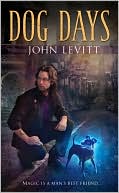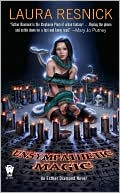Shirvell vs. Armstrong
For months, Michigan Assistant Attorney General Andrew Shirvell has been running his own personal crusade against University of Michigan student assembly president Chris Armstrong, who happens to be gay.
 Shirvell started a blog called Chris Armstrong Watch, which he recently closed to all but invited readers. He described the blog as “a site for concerned University of Michigan alumni, students, and others who oppose the recent election of Chris Armstrong — a RADICAL HOMOSEXUAL ACTIVIST, RACIST, ELITIST, & LIAR.” The photo of Armstrong and a gay pride flag with a swastika photoshopped onto it is from one of his posts.
Shirvell started a blog called Chris Armstrong Watch, which he recently closed to all but invited readers. He described the blog as “a site for concerned University of Michigan alumni, students, and others who oppose the recent election of Chris Armstrong — a RADICAL HOMOSEXUAL ACTIVIST, RACIST, ELITIST, & LIAR.” The photo of Armstrong and a gay pride flag with a swastika photoshopped onto it is from one of his posts.
Shirvell has attended multiple meetings at U of M to protest, criticize, and attack Armstrong in various venues. Armstrong has filed for a personal protection order, and the U of M has issued a trespassing warning against Shirvell.
All of which leaves me wondering, what the hell is wrong with this guy? What is it about homosexuality which causes people to so completely lose their shit? This is the assistant attorney general of the state of Michigan, and he’s facing a PPO and potential harassment charges over what? The fact that Armstrong likes men?
I’ve seen some commenters suggest Shirvell is closeted himself. I have no idea about the man’s sexuality, and I don’t care. Could he be gay, and lashing out at Armstrong as a way to externalize his own conflict? I guess so. But many of these comments seem aimed at hurting/insulting him with the implication that he’s gay, and that makes me uncomfortable.
“Gay” is not an insult. It’s not a weapon or a way to score points in an argument, even an argument against a bigot. If Shirvell is gay, then this whole mess becomes more tragic … but it doesn’t explain where Shirvell developed this obsessive loathing for homosexuality to begin with.
I’m sure there are things people do in the bedroom (or elsewhere) that would squick most of us out. For Shirvell, it’s homosexuality. Me, well, there are certain fetishes that make me cringe a bit to think about. But so what? That’s my problem.
Here’s a radical idea for Mr. Shirvell. If you don’t like homosexuality, don’t have sex with guys. If I think the use of produce in the bedroom is icky, I should keep the carrots and cucumbers in the crisper.
Voila! Problem solved!
Where the hell do you get off bullying consenting adults about what they do in the privacy of their own bedroom? What messed-up logic makes someone think this is okay? We’ve seen the results of this kind of bullying. Is that the ultimate goal, to bully Armstrong and others like him to suicide?
I don’t get it. With all the real problems out there, why would someone spend so much time and energy on this kind of pointless hate?
Shirvell has taken a personal leave of absence from his position. He will face a disciplinary hearing when he returns to work.
I wonder if Shirvell’s disgust about homosexuality is as strong as my own disgust at the idea of a man like him representing me and my state.









 I got back a very nice rejection note, saying though my credentials were impressive, the idea just didn’t grab her. I was actually shocked; that’s how naïve I was about how the business had changed. So I reworked the query, and sent it off to my second choice, and got an enthusiastic request for a partial. This was more like it. Except, this agent passed as well – just didn’t grab him. About this time I realized things might be a bit more difficult than they used to be.
I got back a very nice rejection note, saying though my credentials were impressive, the idea just didn’t grab her. I was actually shocked; that’s how naïve I was about how the business had changed. So I reworked the query, and sent it off to my second choice, and got an enthusiastic request for a partial. This was more like it. Except, this agent passed as well – just didn’t grab him. About this time I realized things might be a bit more difficult than they used to be.
 The nice thing is that after I went to the hospital, I felt better within a day or two. Insulin is amazing stuff. I had no idea just how bad I had been feeling until I was better.
The nice thing is that after I went to the hospital, I felt better within a day or two. Insulin is amazing stuff. I had no idea just how bad I had been feeling until I was better. Laura Resnick
Laura Resnick find me—and if it did, I should call them immediately, because they wanted to make an offer on One Sultry Summer
find me—and if it did, I should call them immediately, because they wanted to make an offer on One Sultry Summer  2. CatsCurious Press is opening to submissions on October 1 for the Faery Taile Project 2. Some of you probably remember the first project, where
2. CatsCurious Press is opening to submissions on October 1 for the Faery Taile Project 2. Some of you probably remember the first project, where